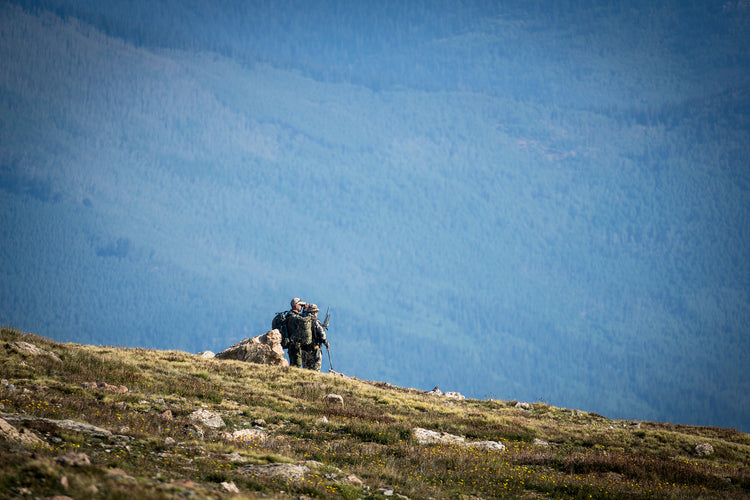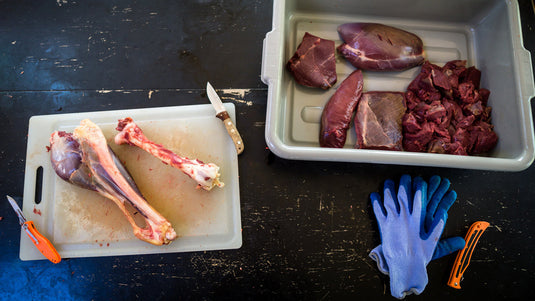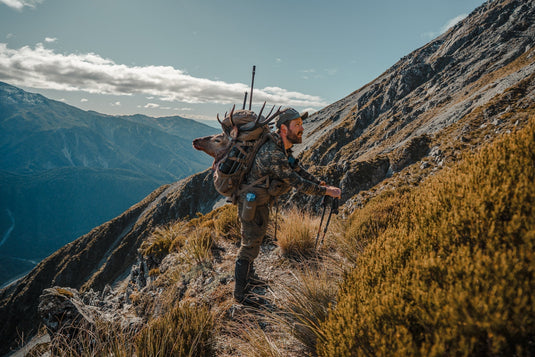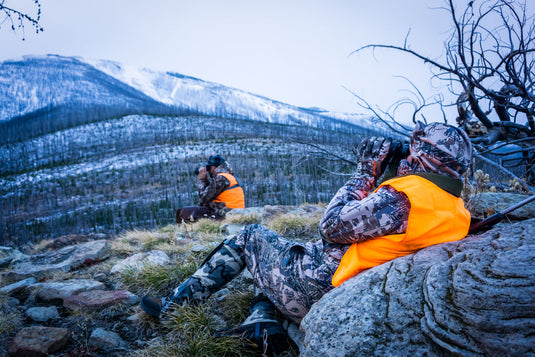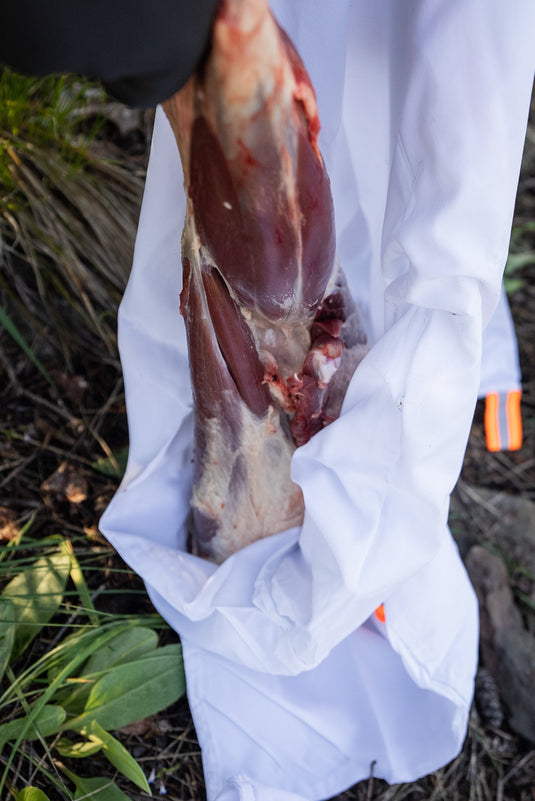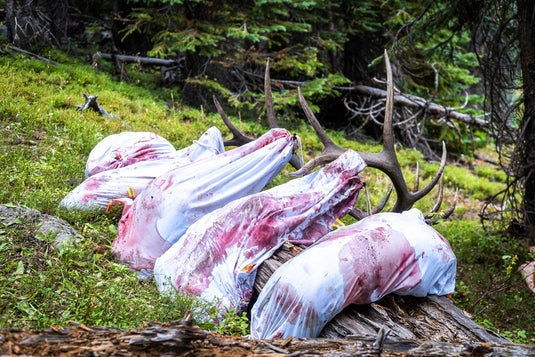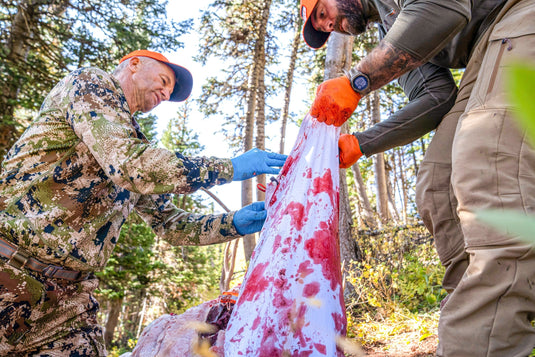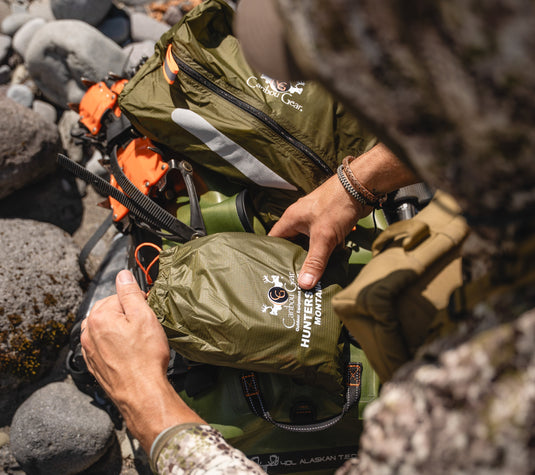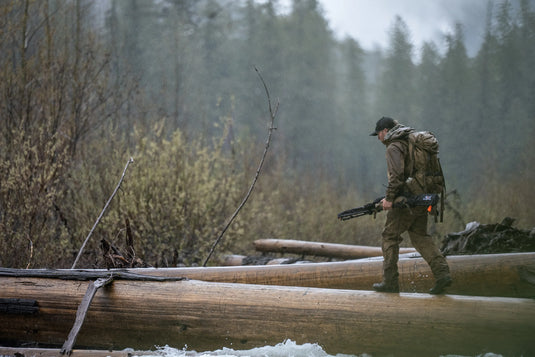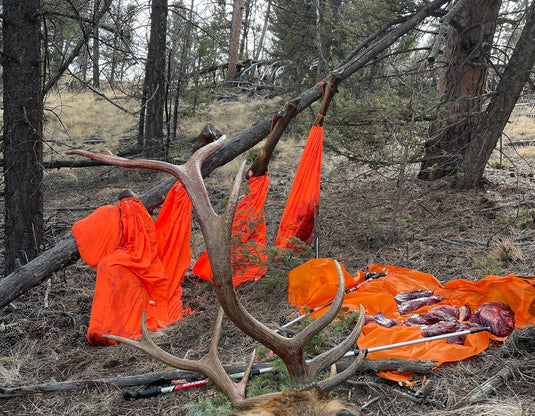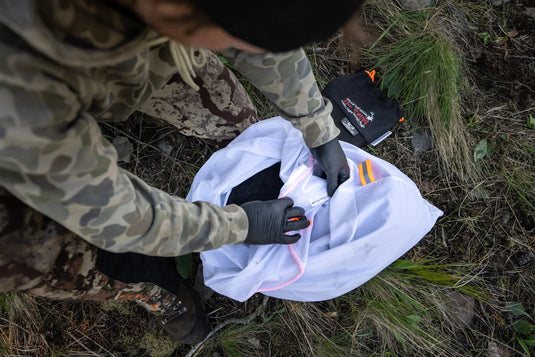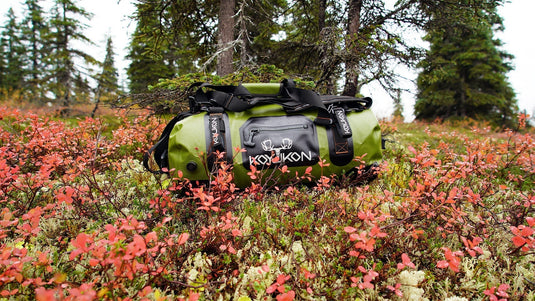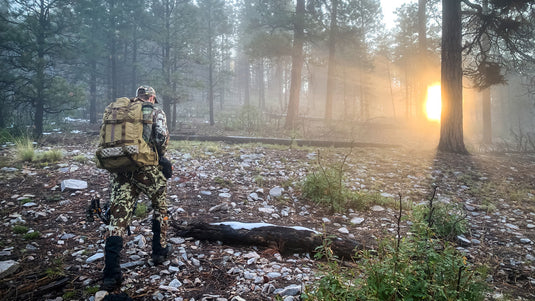There’s nothing in the world like hunting elk during the rut in September and early October. We look forward to it all year long. But as much as we love talking to elk, early season weather can be cruel. Snow is always a possibility, and we’ve experienced our fair share of it. But more often than not, early season elk hunts can be a battle with hot weather conditions.
The rut makes bulls vulnerable. But when the temperatures are warm, locating elk is no easy task.
Here are three tactics you might consider for early season elk hunting:
-
Rely on Glassing
Hot weather is even less comfortable for the elk than it is for you. Hiking around in the bright sun while sweating isn’t what you want to be doing – so don’t expect elk to do the same. Get to a glassing point well before daylight. Pick a spot where the rising sun will be at your back. Get there early! You want to be set up and ready to glass as soon as it’s light enough to see.
These early morning hours are the critical times to spot elk when they are on their feet. You might only see them for a few minutes before they disappear into the timber. But that’s all you need – once you’ve located a herd, you can make a game plan to close the distance.
On any elk hunt, locating elk is a large part of the battle. If you can spot elk in the morning, try and watch where they bed. If you have a good idea of where they bedded, get as close as you can before you set up to call. Otherwise, follow the same routine in the evenings. If you can spot elk just before dark, that gives you a good idea of where you need to be in the morning.

-
Find the Cool Zones
Cool air tends to settle in deep ravines and along creek bottoms. Additionally, the north sides of mountains offer shady, cool relief from the midday sun. As the temperature rises, elk will drop into these thick drainages to find shade and cold water sources.
If you didn’t locate elk with your eyes in the morning, don’t go back to camp for the afternoon. You can still find them. With afternoon thermals coming uphill, it helps to be above the elk. Walk ridges above these creek bottoms or north-facing slopes and use location bugles to try and locate elk in these refuges.
If you get a response from a bull, make a game plan to close the distance. Pay close attention to the wind, lines of sight, and the fact that he may be surrounded by bedded cows.
-
Sit At A Wallow
If you find a well-used wallow or water hole, you may consider creating a makeshift blind, and sitting during the hot hours of the afternoon. If you’re confident elk are in the area, this can be a great strategy. Even a large herd bull will often get up from his bed and leave his cows during the heat of the day to go wallow.
Set up close enough to the wallow that you’re in range. Pay close attention to the wind. And as you conceal yourself, make sure you can draw your bow and that you have good shooting lanes. Once you’re set up, cow calling and raking can be effective ways to draw in a curious elk.

Here are a few elk calling tips to keep in mind during the rut…
Pressured vs Unpressured Elk
The difference between pressured and unpressured elk is significant. Elk that see very few hunters are often more responsive to calls and the element of other callers working the same herds is not an issue. That doesn’t mean pressured elk are not responsive to calls. But they are certainly more wary and adaptive to the calls of hunters.
Be extra considerate of the circumstances surrounding the hunt and look for other hunters and vehicles at trailheads to assess pressure. If you are not alone on the mountain, consider a more passive approach using glassing, cow calls and silent stalks rather than aggressive bugles. Running around bugling in high-pressured areas is a great way to call in other hunters.
Single Person Passive Approach
When you’re hunting solo on public land with other hunters in the area, consider a passive approach. Drive around the area at night and throw out an occasional bugle as a locating methodology. Pressured elk still bugle and will do so heavily at night during the rut. After locating an active area, hike the morning and pay special attention to wind while moving slowly with intermittent cow calls. You know elk are in the area and this passive game is highly effective.
The Challenger Approach
Some bulls simply can’t turn down a challenge from outside suitors. When bulls are working to build a harem, a challenger presents a risk to their breeding rights. But in order for a challenge to be effective, the caller needs to be close – very close! Bugling from a distance may not get the bull fired up. Or he may just round up his cows and leave. However, if you can get extremely close and then announce your presence, there’s a good chance you can make him mad.
Bugle aggressively and wait for the bull to return the call. After a round or two, cut off the bull’s call. This will get him fired up. Be aggressive in your movements as well. Break sticks and branches to sound like a bull crashing through the forest. Ideally, the bull will move to you. But in some cases, making a move to close the distance is required.

Team Calling
Utilizing multiple callers delivers a major advantage in the field. It adds a realistic dynamic with two or more callers representing several bulls and cows. Using multiple callers to represent a group of cows is also a great approach. A greedy bull will view the calls as an opportunity to build a harem. Try this early in the season as they are just beginning to gather cows. A team approach also works well for vocal bulls that will not close the distance to the call. One caller can challenge and distract while the shooter closes the gap silently.
Wind and Approach Still Matter
Even when a bull is fired up, playing the wind and making a strategic approach remain essential. A bad breeze can send the bull running. And a poor position can cause the bull to hang up out of range. Take your time and make a game plan before calling. Make sure the wind is right. And pick a setup location that requires the bull to come within range if he wants to see who is making the noise.
Recommended Elk Calls
The gear we carry here in the Caribou Gear Store are items that we personally use in the field. And that’s true of our elk calls. We carry diaphragms and bugle tubes from Rocky Mountain Hunting Calls. These high quality elk calls offer great consistency and durability.
Different diaphragms fit each person’s mouth differently. If this is your first time, we recommend trying a few different ones before you decide on a favorite and stock up for the season.
A Note About Meat Care
Calling in a bull during the rut is about as exciting as it gets! But if you are successful this season, that’s not even the hard part. Next, you’ll be faced with the challenge of taking care of your wild game meat in warm, early season weather.
After the rush of excitement wears off and you confirm the elk has expired, it’s time to get to work. During September when the weather tends to be warm, it’s imperative to get the hide off and get quarters into game bags as soon as possible. 3 things we always carry include game bags, citric acid spray, and a Hutner’s Tarp.
For a few tips and ideas on warm weather meat care, check out the following articles:
- Reminders for Warm Weather Meat Care
- Why Every Hunter Should Carry Citric Acid Spray
- Meat Care Tips to Maximize Your Wild Game
Best of luck to all the September elk hunters this year! With everything else going on in the world, we hope the 2022 elk season proves to be a highlight of your year.


